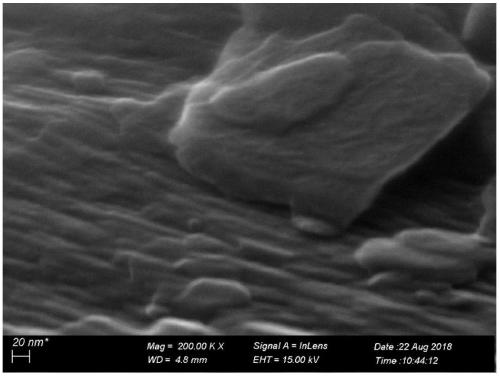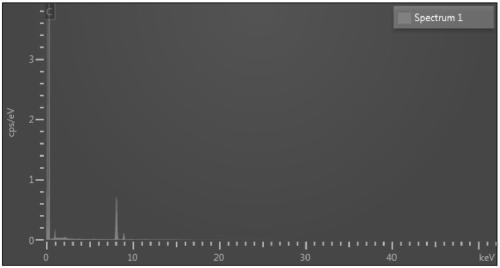Lithium ion battery negative electrode active material, lithium ion battery negative electrode, lithium ion battery, battery pack and battery power vehicle
A lithium-ion battery, negative electrode technology, applied in battery electrodes, batteries, secondary batteries, etc., can solve problems such as reduced discharge capacity
- Summary
- Abstract
- Description
- Claims
- Application Information
AI Technical Summary
Problems solved by technology
Method used
Image
Examples
Embodiment 1
[0075] 1. Preparation of lithium-ion battery negative electrode carbon particles:
[0076] In the present invention, casting coke is selected as the carbon source (SCO), and the casting coke is dried until the water content is lower than 1% by weight. The carbon source was crushed until the D50 was 10-18 μm, and the carbon source was purified with 30 volume % HF. The carbon source and the HF solution were mixed uniformly at a volume ratio of 1:1.2, and stirred for 30 minutes to form a mixture. After the mixture is separated, the solid is rinsed with deionized water, and after separation, the separated solid is dried for use.
[0077] The dried solid is subjected to carbonization treatment, and the whole carbonization treatment process includes three heating stages. The first heating stage is: heating from room temperature to 500°C at a heating rate of 3°C / min, and keeping the temperature at 500°C for 30 minutes; the second heating stage is: heating to 1000°C at a heating rate...
Embodiment 2
[0089] According to the method of embodiment 1, its difference is:
[0090] When preparing lithium-ion battery negative electrode carbon particles, the dried solids are subjected to carbonization treatment, and the entire carbonization treatment process includes six heating stages. The first heating stage is: heating from room temperature to 200°C at a heating rate of 4°C / min, and keeping the temperature constant for 30 minutes; the second heating stage is: heating to 500°C at a heating rate of 5°C / min, and keeping the temperature constant for 30 minutes; The third heating stage is: heating to 800°C at a heating rate of 5°C / min, and keeping the temperature constant for 20 minutes; the fourth heating stage is: heating to 1000°C at a heating rate of 4°C / min, and keeping the temperature constant for 20 minutes; the fifth heating stage is: The temperature was raised to 1200°C at a heating rate of 4°C / min, and the temperature was kept constant for 20 minutes; the sixth heating stag...
Embodiment 3
[0094] According to the method of embodiment 1, its difference is:
[0095] The dried solid is subjected to carbonization treatment, and the whole carbonization treatment process includes three heating stages. The first heating stage is: heating from room temperature to 500°C at a heating rate of 3°C / min, and keeping the temperature at 500°C for 20 minutes; the second heating stage is: continuing to heat at a heating rate of 3°C / min to 1000°C , and keep the temperature at 1000°C for 30min; the third heating stage is: continue heating to 1500°C at a heating rate of 3°C / min, and keep the temperature at 1500°C for 30min.
[0096] The carbonized solid is subjected to graphitization treatment, and the entire graphitization treatment process includes three heating stages. The first heating stage is: heating to 1350°C at a heating rate of r1=3°C / min, and keeping the temperature at 1350°C for 30 minutes; the second heating stage is: heating to 1980 at a heating rate of r2=2.8°C / min ...
PUM
| Property | Measurement | Unit |
|---|---|---|
| specific surface area | aaaaa | aaaaa |
| size | aaaaa | aaaaa |
| particle diameter | aaaaa | aaaaa |
Abstract
Description
Claims
Application Information
 Login to View More
Login to View More - R&D
- Intellectual Property
- Life Sciences
- Materials
- Tech Scout
- Unparalleled Data Quality
- Higher Quality Content
- 60% Fewer Hallucinations
Browse by: Latest US Patents, China's latest patents, Technical Efficacy Thesaurus, Application Domain, Technology Topic, Popular Technical Reports.
© 2025 PatSnap. All rights reserved.Legal|Privacy policy|Modern Slavery Act Transparency Statement|Sitemap|About US| Contact US: help@patsnap.com



